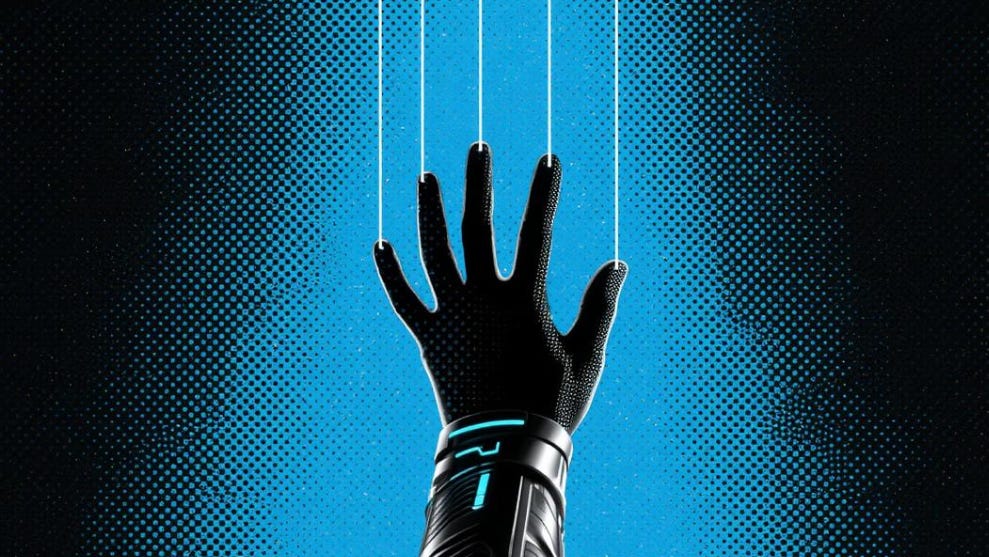I Think AI Is Making Me Dumber
Stop Outsourcing Your Thinking
It started in a brainstorming session.
The pressure was on. A blank whiteboard stared back at our team, and we needed a breakthrough idea, fast. As my colleagues threw out half-formed thoughts, my fingers instinctively reached for the keyboard.
My first impulse wasn’t to dig deeper into my own mind, but to open an AI tool.
I wasn’t really thinking about the problem anymore. I was thinking about which prompt to use. I cycled through different AI models, rephrasing my query, hoping for a spark. The results were… fine. They were structured, logical, and thoroughly mediocre.
It felt like playing a slot machine for ideas. I was just pulling a lever, hoping a jackpot of creativity would magically appear.
In that moment, I realized I wasn’t a creator anymore. I was a curator of mediocrity. And a terrifying thought washed over me: Is AI making me dumber?
There’s a name for this feeling: Cognitive Offloading. It’s the act of using an external tool to handle a mental task that our brain would normally do.
Remember when you could navigate your city by memory? Me neither. GPS took over that job, and our internal compass began to rust. Remember doing mental math? Calculators made that skill feel optional.
AI is the GPS for everything.
It’s a super-calculator for any question, a universal navigator for any intellectual problem. When we know an answer is just a prompt away, our brain loses the incentive to do the hard work of remembering, analyzing, or connecting disparate ideas. We’re outsourcing our thinking, and our mental muscles are beginning to atrophy.
It’s the simple, biological principle of “use it or lose it.” And I was losing it.
Alienation and Lost Ideas
The problem runs deeper than just forgetting a few facts. It’s changing how I think.
Before AI, when I got stuck on a problem, I’d struggle. I’d pace around, stare out the window, and let my mind wander. That struggle was frustrating, but it was also where the magic happened. The best ideas were born from that friction.
Now, AI offers a perfectly smooth, frictionless path. But it’s a path that often leads to a dead end.
I noticed that when an AI gave me a reasonable-sounding solution, my brain would just… stop. I found it incredibly difficult to think of alternative approaches. My thinking was converging with the machine’s, losing its edge and originality.
Worse, there was a sense of alienation.
When I used AI to generate text, even if I edited it heavily, the final piece felt strangely foreign. It lacked my voice, my quirks, my story.
It felt like I’d stolen someone else’s fruit and slapped my name on it.
It didn’t feel fine. It felt hollow. That feeling of inauthenticity is the true cost of skipping the creative struggle.
What Happens When the Wi-Fi Dies?
The real wake-up call came with a simple question: What would I do without it?
What if I’m in a high-stakes situation, facing an urgent problem with no access to AI? Have I become so reliant on my digital co-pilot that I can no longer fly the plane myself?
That thought was genuinely scary.
I realized the problem wasn’t the AI. AI is a phenomenal tool. The problem was my relationship with it. I had let my powerful tool become a comfortable crutch. It was time for a change.
3-Step Plan
I didn’t want to abandon AI. I wanted to learn how to use it without becoming a cognitive couch potato. So, I created a simple, three-step “rehab” plan to reclaim my thinking.
1. The Sparring Partner, Not the Substitute.
This is my golden rule: Think First, AI Second. Before I ask AI anything, I force myself to spend time with the problem alone. I write down my own thoughts, sketch out a rough outline, and form my own half-baked opinions. Only then do I bring in AI. It’s no longer a substitute for my thinking; it’s a sparring partner that challenges and refines it. You don’t go to the gym to watch the machines lift the weights for you.
2. The Skeptic, Not the Believer.
I now treat every AI-generated answer with healthy skepticism. I question its sources, challenge its logic, and fact-check its claims. Most importantly, I force myself to rephrase its key insights in my own words. This simple act transforms passive information into active knowledge. I am the master of the tool, not its servant.
3. The Dialogue, Not the Vending Machine.
I stopped treating AI like a vending machine for answers (“Give me 10 ideas”). Instead, I use it as a Socratic partner. I start a conversation. I provide context, share my own situation, and ask it to play devil’s advocate. I’m no longer skipping the thinking process; I’m using AI to build a richer, more dynamic thinking environment for myself.
Here’s the biggest lesson I’ve learned: True growth only happens in the discomfort zone.
The struggle of a difficult problem, the frustration of a creative block, the effort of deep concentration—these are not bugs in our cognitive process. They are the process. They are the friction that creates the spark.
AI’s greatest promise, and its greatest danger, is its ability to smooth over that discomfort.
My goal is no longer to seek efficiency at all costs. It’s to re-embrace the valuable struggle of thinking for myself. AI is still my co-pilot, but I’ve taken my hands off autopilot.
It’s time to stop outsourcing our thinking and start strengthening it. The view is much better when you’re the one flying.
AI generated some images and helped write the article.





TikTok will be bought by usa,it's too terrible,its my only interests